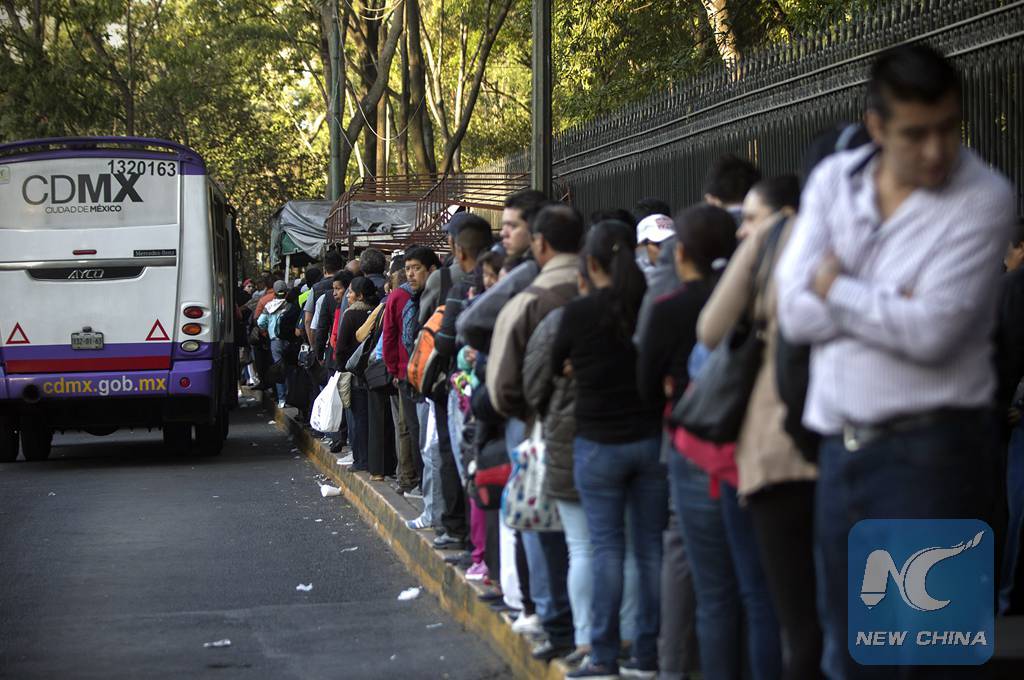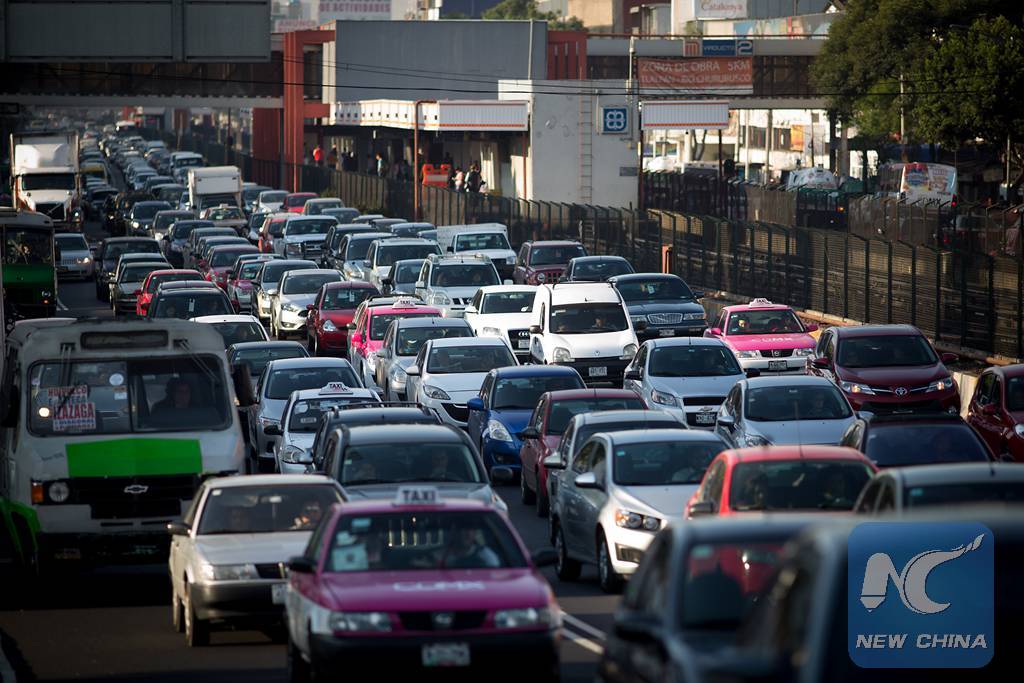
People wait in line to board a public bus, in Mexico City, capital of Mexico, on April 5, 2016. (Xinhua/Alejandro Ayala)
MEXICO CITY, July 1 (Xinhua) -- Air pollution in Greater Mexico City could reduce if authorities improve public transport so that people could drive less, a French expert told Xinhua.
The Mexican population would leave their car at home if they had public transportation that can satisfy their mobility needs, according to the Managing Director for the Interprofessional Technical Centre for Studies on Air Pollution (CITEPA), Jerome Boutang.
Boutang gave the French capital city of Paris as an example. Like Mexico City, it is a major city that also struggles with pollution. However, opening an electric tramway in the Boulevard Peripherique benefited an important number of inhabitants that previously had no other option but to drive along this road, the busiest in all of Europe.
"How mobility flows are organized need to be thoroughly looked into," said the managing director from the Centre that identifies and analyzes information surrounding atmospheric pollution in France.
Mexico City, located in the center of the country, with a population of almost 22 million inhabitants, has seen eight environmental alerts between March and June due to high ozone levels, caused by increased emissions and by a dry season of high solar radiation and little rain.
Faced with the aforementioned situation, on Friday a new vehicle verification federal law came into force, tightening the maximum limits allowed within the current gas emissions checks carried out on all vehicles in the metropolis which encompasses Mexico City and 18 suburban municipalities in Mexico State.
Boutang said the vehicle restriction is a measure that limits the emission of ozone precursor gases or particles that pollute the air.
However, the specialist said that governments have to promote more clean mobility such as hybrid or electric public transport, cycle routes and pedestrian streets, to ensure less fossil fuel-consuming vehicles are used.

Vehicles move slowly in Mexico City, capital of Mexico, on March 15, 2016. (Xinhua/Pedro Mera)
"People have to move around every day, what is the mobility offer? This offer is going to influence everyone's behavior," said Boutang.
He also said that authorities should promote incentives among drivers and transport companies so that they change their car or bus from gas or diesel-based to hybrid models which are more environmentally friendly.
The managing director of CITEPA said the ideal scenario would be that, in the future, hybrid vehicles would completely replace the current internal combustion vehicles which in Mexico add up to 37 million cars, public transport buses and cargo trucks.
The most efficient method to combat air pollution is implementing a carbon tax. However, fiscal measures are unpopular and governments find it difficult to carry out, according to the expert.
"I am an economist and as an economist, I would say that a tax on the price of carbon is the best way to influence behavior in the long run," said Boutang.
"Since taxes are very unpopular, (providing) subsidies for drivers to buy hybrid vehicles seems like a good idea, not only on an individual level but also in public transport," added Boutang.

